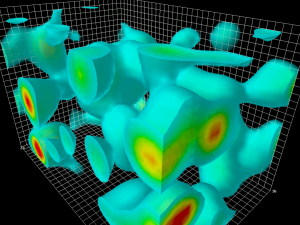The phenomena connected to the confinement of quarks and gluons inside hadrons and to the spontaneous breaking of chiral symmetry are not studied in a viable way in perturbation theory. A very powerful tool is lattice QCD in this context: the hadronic properties are calculated with the help of Monte-Carlo simulations. Analytical methods reveal themselves also as precious tools, such as the resort to effective theories, diverse potential models, the solution of Dyson-Schwinger equations or unitarity constraints of the theory in order to establish dispersion relations. Furthermore, experiments are underway to measure observables sensitive to effects beyond the standard model, such as the electric dipole moment of the neutron or the anormal magnetic moment of the muon, which require precision calculations of non-perturbative QCD.

